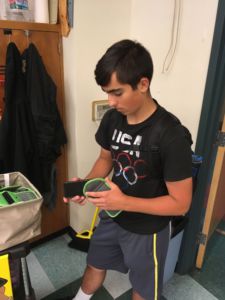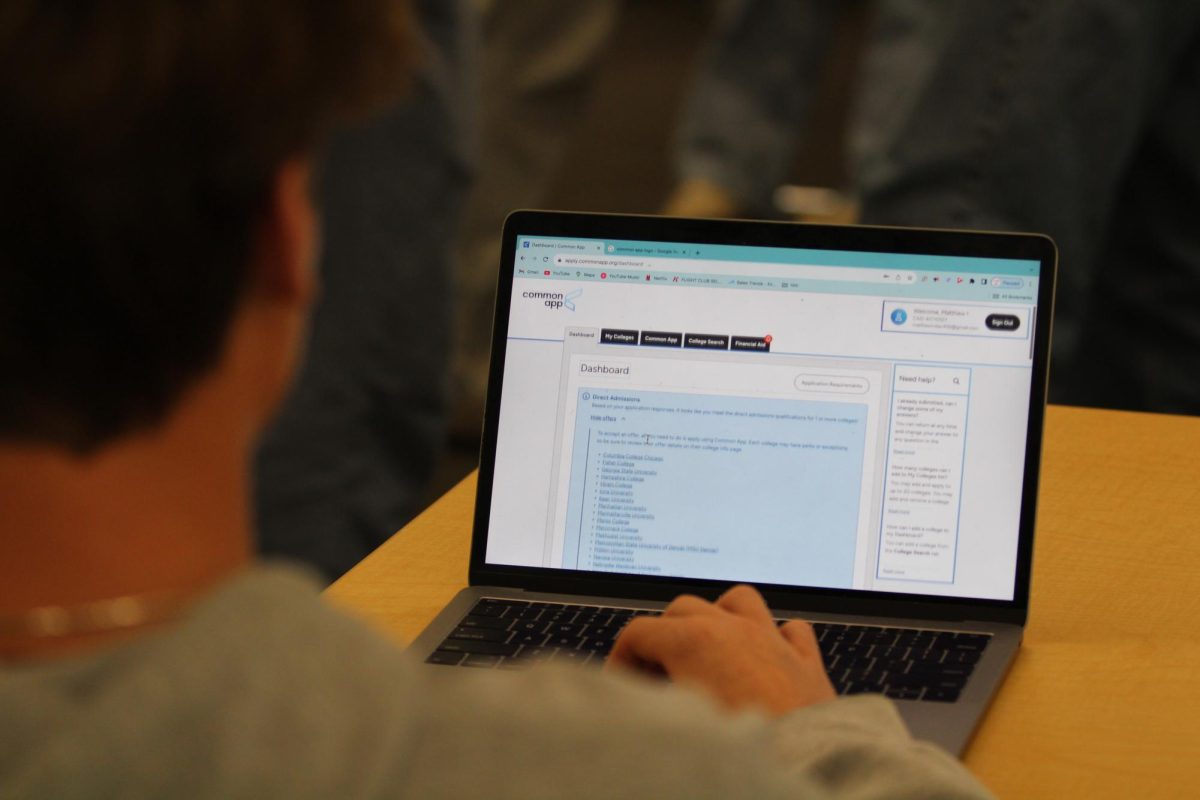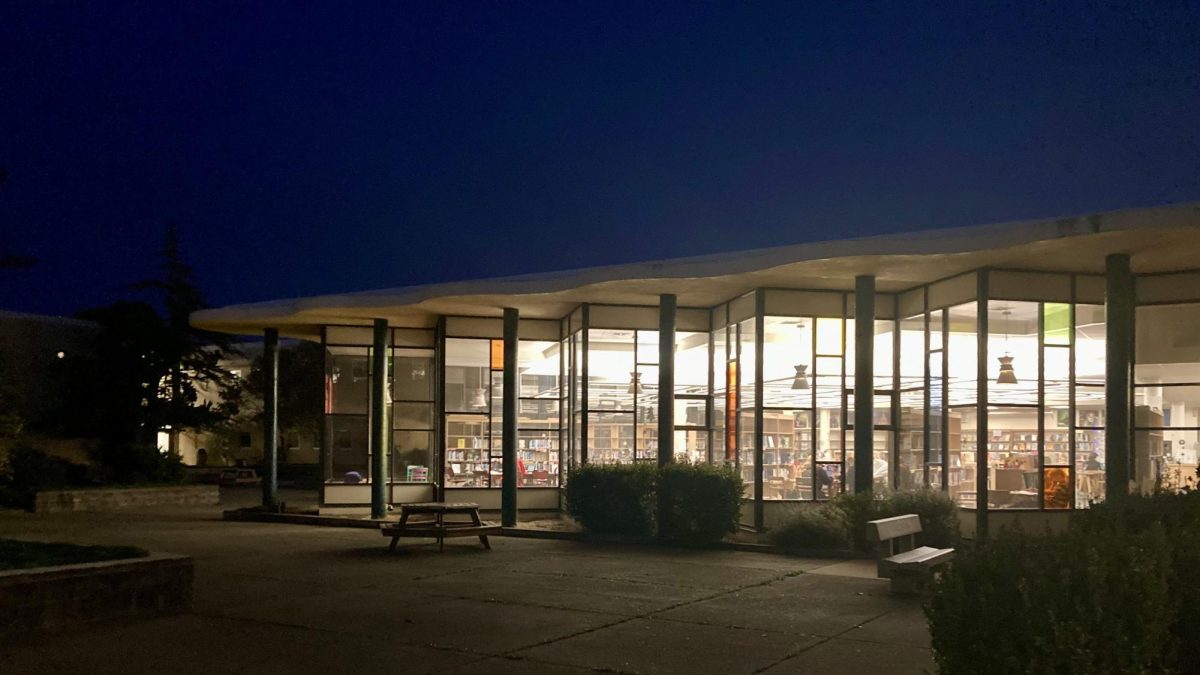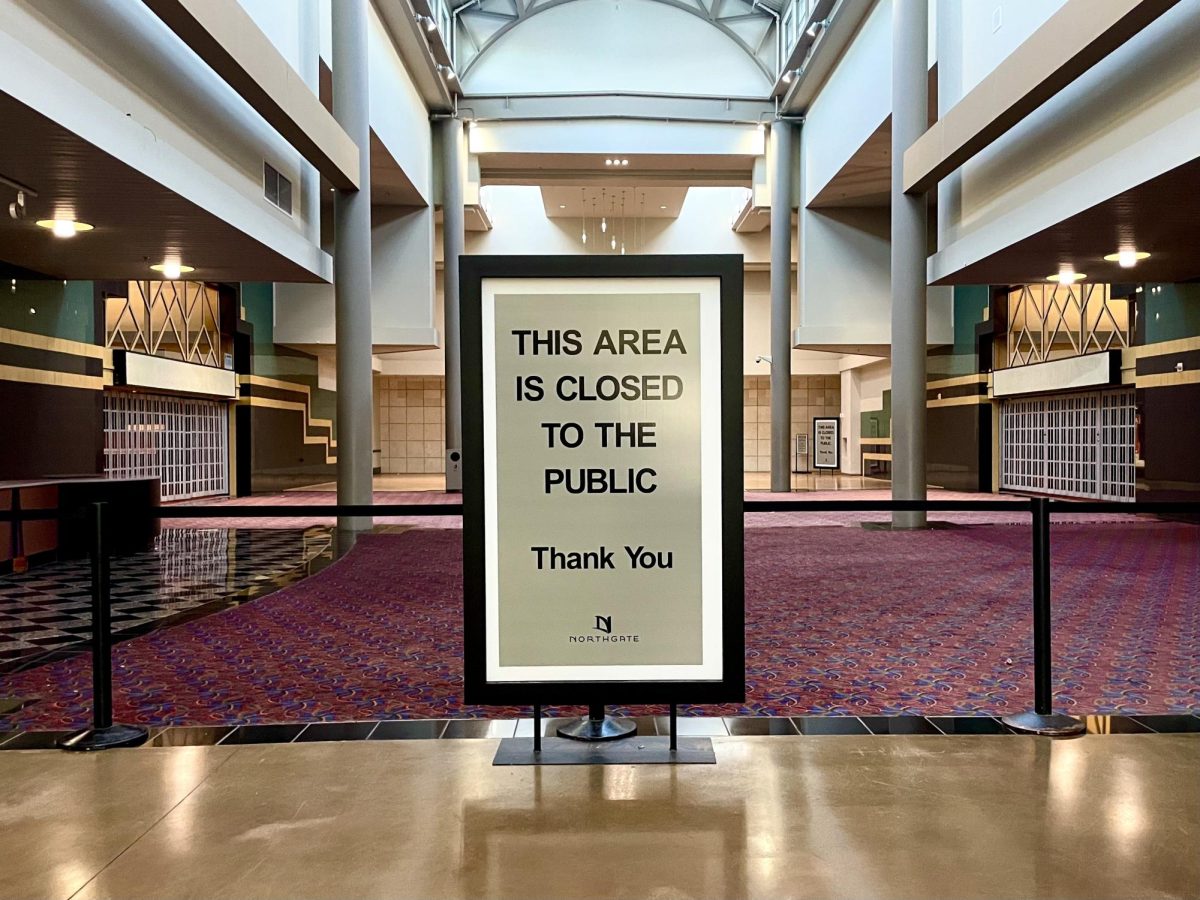To discourage the use of mobile phones in class, some teachers began using wall-caddy “phone jails” with blue numbered pockets for student cellphones. However, English teacher Jonathan Weller and math teacher Jessica Crabtree have two different ways of addressing student cell phone usage in the classroom.
In Crabtree’s room, 252, the Yondr phone pouches are utilized instead of the traditional wall-caddy phone jails. Yondr, a start-up company founded by Graham Dugoni, created the Yondr pouch which locks phones inside a protective cover. To retrieve the phones, the magnetized surface of a Yondr base mechanism, located on the back table of Crabtree’s classroom, opens the pouch.

Before this school year, Crabtree didn’t utilize any kind of phone jail system in her classroom. Instead, Crabtree allowed her students to use their phones in class as long as they notified her before doing so. However, she noticed that the students would often use their phones for other reasons, which was a distraction for the students during class time.
“The reality was, every student was using their phone to check social media. Whether it was texting, Snapchat, Instagram or email, they weren’t using it for school,” Crabtree said.
Crabtree sought to implement a phone jail system to confront the problem. After a survey of her students last school year, Crabtree realized she needed a different system to replace the traditional wall-caddy that students had utilized in other classes.
“What I heard from my students was that I needed to protect their phones from breaking and being stolen in my request for them to not have access to their phones in class,” Crabtree said.
After researching for alternatives to the wall-caddy phone jail, Crabtree found the Yondr pouch.
“Yondr solved both of the students’ complaints while meeting the means of what I wanted: to reduce the distractions,” Crabtree said.
According to Crabtree, the Yondr has been well-received by a large majority of her students.
“The kids, so far, are intrigued by it. They just come in, grab the pouch and sit down,” Crabtree said.
Crabtree realized how the Yondr positively affected her students during the Monday, Aug. 28 advisory. Nineteen of the 24 students in Crabtree’s advisory class were math students of hers and had grown accustomed to the Yondr pouches after three school days, according to Crabtree. During advisory, the Yondr pouches were not laid out for mandatory use.
“The students walked in, sat down and no one had their phone out. They started talking to each other, which is what we want to have happen in advisory,” Crabtree said.
Weller has a different policy in regards to cell phones in the classroom. Similar to Crabtree, Weller believes phones are distracting in the classroom environment when used for purposes not related to the curriculum. However, Weller does not utilize a phone jail.
“I need to encourage my students to be self-regulating, so I don’t use phone jails,” Weller said.
Weller has a talk with his students at the beginning of each school year about how to be disciplined with their phones in his class. However, Weller notes that the second semester can often be a little more challenging.
“I’ve thought about using a phone jail later in the year, but most of the time it’s only a couple students who struggle with [phone usage],” Weller said.
Weller notes that a lack of downtime and integrative learning is what may help keep the students off their phones in his English classes.

“From the moment the students walk in to the minute they leave, there is learning material they are engaged in,” Weller said.
Sophomore Drake Goodman notes that Weller’s class is especially engaging and that this aspect may have an effect on the lessened problem with phone use in Weller’s class.
“A lot of kids use their phone if they’re bored or distracted, but Mr. Weller keeps you engaged which makes it easier for kids to stay focused,” Goodman said.
Goodman also notes how the curriculum taught in Weller’s class helps students stay away from their phones.
“Some kids get a little bored in other classes, so when there’s free time, sometimes they use their phones,” Goodman said.
Crabtree notes that the math curriculum may influence kids to use their phone when they’re not supposed to.
“Math is boring sometimes. When it’s boring, it’s hard,” Crabtree said.
However, Crabtree aims for an environment where the phone isn’t an escape for students when math seems challenging or boring.
Senior Trevor Bagattini, a student of Crabtree’s, believes that the curriculum content plays a role in how much students utilize their phones during class time.
“When kids are more hands-on interacting in the lessons they are going to be on their phone less,” Bagattini said.





